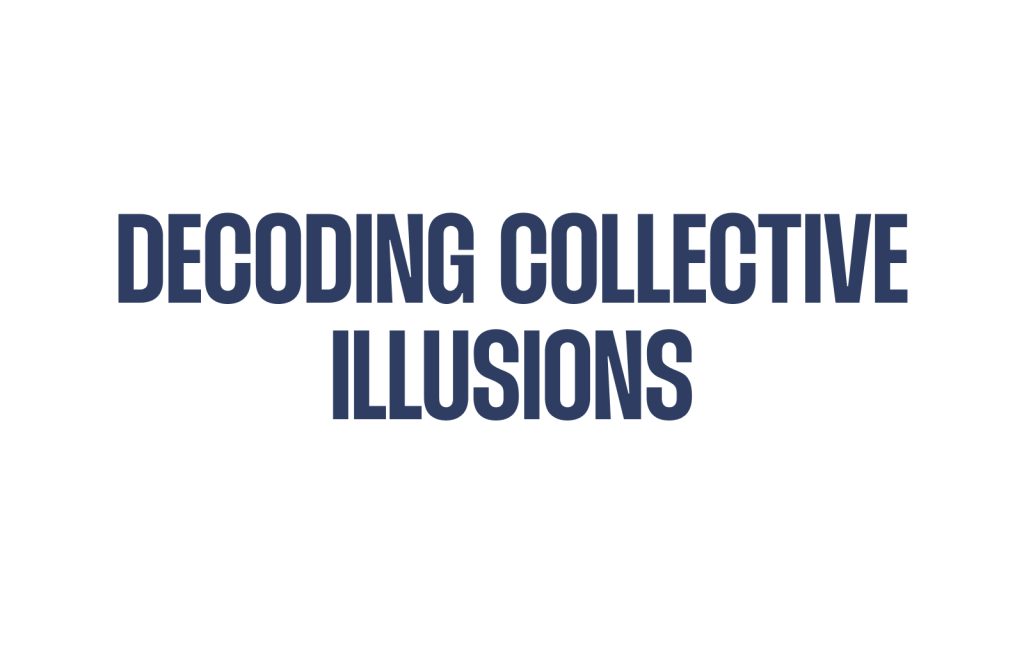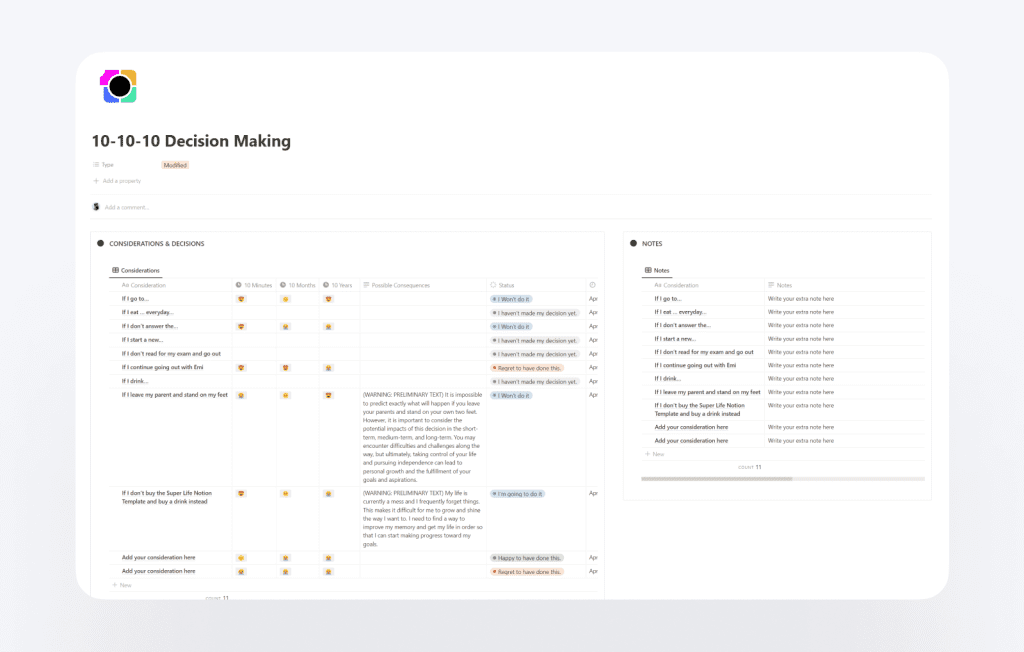Decoding Collective Illusions: Unraveling the Impact on Decision Making

Collective Illusions
In the realm of decision-making, our perceptions of reality often deviate from objective truths. These deviations, known as collective illusions, can profoundly influence our judgments and actions. As we explore the intriguing world of cognitive illusions and perception errors, we uncover how our brains construct perceptions based on expectations rather than factual evidence. This article delves into the realm of collective illusions, shedding light on how they can mislead us in various aspects of life, particularly in organizational settings.
🚀 Boost Your Decision-Making with our FREE 10-10-10 Rule Template!
Are you tired of second-guessing your choices? Unleash the power of smarter decision-making with our exclusive 10-10-10 Rule Template – designed to help you make sound and strategic choices effortlessly. Say goodbye to confusion and hello to clarity! Grab your FREE template for Notion now and take control of your future! 💡📈

The Art of Perception: Constructing Reality
Our brains rely on cognitive heuristics to interpret the world around us, filling in the gaps with minimal information. This constructivist approach shapes our visual perception, revealing fascinating phenomena like the rubber hand experiment and the limitations of color awareness. Similarly, our cognitive illusions mold our decision-making, leading us to form judgments based on assumptions and heuristics.
This phenomenon becomes evident when we examine how we interpret motion, as it can be influenced by the behavior of others, leading us to adopt group norms. Additionally, the rubber hand experiment demonstrates how our brains can be tricked into feeling pain through visual association. Surprisingly, much of our peripheral vision is constructed, with up to two-thirds of the colors in our field of vision being assumed rather than perceived.
Impulse vs. Reflection: Cognitive Errors in Decision Making
Making decisions is a complex process that involves a blend of impulse and reflection. However, many decisions are prone to cognitive errors, as exemplified by the ball and bat problem or the cognitive reflection test questions.
One such question asks, “A bat and ball cost $1.10 in total. The bat costs $1.00 more than the ball. How much does the ball cost?” The incorrect impulsive answer for most participants, regardless of education or intelligence, is 10 cents. Upon reflection, individuals arrive at the correct answer of 5 cents.
These impulsive substitution errors occur because our instinct is to opt for simpler problems over more complex ones. While these errors can be corrected with additional cognitive effort, they highlight how our brains often resort to shortcuts when processing information.
Group Dynamics and Shared Beliefs
In group settings, decision-making becomes a dynamic interplay of social norms, emotions, and perceptions. Our subconscious imitation tendencies come to the forefront, influencing our beliefs as we adopt or construct them based on the group’s collective mindset.
For instance, studies show that individuals act in accordance with beliefs they perceive are shared by others, but that perception is often miscalculated. This phenomenon can quickly turn collective illusions into reality, as the perceived norms become actual norms, replacing the true beliefs of the majority.
Perception Miscalculation and Conversion to Reality
Interestingly, our ability to accurately perceive the beliefs of others is often flawed, yet we tend to conform to these perceived norms. This systemic, self-reinforcing effect can eventually convert these false perceptions into reality.
This phenomenon, known as the Thomas Theorem, highlights that if individuals define situations as real, they become real in their consequences. As such, collective illusions can significantly impact decision-making processes and shape organizational culture.
The Influence of Collective Illusions on Organizational Decision Making
Drawing parallels between cultural phenomena and organizational dynamics, we delve into how collective illusions can impact decision-making within companies. Organizations are built on strong convictions that guide their decision-making and can lead to success or failure.
Furthermore, the illusion of consensus can create comfort and resistance to change within an organization. The risk is that these collective illusions within a culture, especially where productive dissent isn’t welcomed, can quickly create an autoimmune response to contrarian viewpoints.
Conclusion
Collective illusions wield a considerable influence over our decision-making processes. Understanding how these illusions can skew perceptions and lead to conformity within groups and organizations is crucial for making well-informed choices.
By acknowledging the existence of collective illusions and fostering an environment that welcomes diverse perspectives, organizations can navigate the complex terrain of decision-making with clarity and resilience.
Embracing a culture of open dialogue and productive dissent can lead to transformative outcomes and elevate the organization’s ability to adapt and thrive. By actively combating dangerous implicit perceptions and fostering explicit and observable beliefs, organizations can mitigate the impact of collective illusions and make more informed decisions.
Keep reading:

















